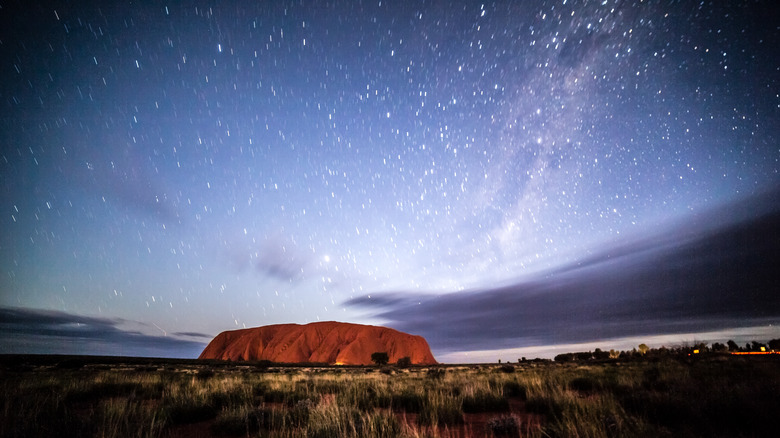The history behind the beautiful place
Uluru-Kata Tjuta National Park comprises both the famous rock formation (Uluru) and the rock domes to the west, called Kata Tjuta. The formations began their creation around 500 million years ago, and about 300 million years ago, the water covering the area receded, with erosion leaving behind these rock structures. Uluru is made of arkose, while Kata Tjuta is created from a combination of granite and basalt boulders and pebbles, as well as mud and sand. Uluru stands 1141 feet above the ground, though it goes deep into the ground as well. It’s 2.2 miles long, 1.2 miles wide, and 5.8 miles around. The closest major town is Alice Springs, which is over 200 miles away.
The place is sacred to the Anangu people (comprising the Pitjantjatjara and Yankunytjatjara peoples), who have lived there for thousands of years. The rock art in the area is viewable by tourists (on a free, guided tour). Though it’s difficult to date, experts believe humans have lived there for about 30,000 years.
You can no longer climb Uluru, as it is a protected spot. Tourists started climbing in the 1930s, but in 1985, the park was given back to the Anangu in a move called the Handback. In the 1990s, signs asking people not to climb were put up, and many listened. In 2017 the decision was made to close the climb, and on October 26, 2019, it shut for good. Don’t do it. There are penalties — but respect for the local culture is even more important.
What to do at Uluru

There is a lot to do in this park, with the sunrise and sunset lighting up the place in glorious colors. Five areas are set aside for official viewing and pictures. That said, you can find other areas, which is allowed.
There are plenty of official walking paths that you can take in the area to give you stunning views of the park’s plant life — though do keep in mind that you’ll need a park pass for your trip out. There are also tour companies that will take you out on walks, with some even using Segways. Some of the tours involve bike rides, Maruku Arts dot painting lessons, nature tours, outings to show you the stars and constellations, and ranger-guided tours. Those will teach you about the history and geology of the park, as well as the culture that surrounds its history.
There is a cultural center where you can find two Aboriginal-owned art galleries. It features the Tjukurpa Tunnel, which teaches about the local creation stories and music and lets you feel like you’re traveling back through time. There is also a cafe that sells souvenirs. If you’re a birder, this is a great place to check out brown and peregrine falcons, zebra finches, Australian kestrels, fairy martins, emus, crimson chats, Major Mitchell’s cockatoos, rainbow bee-eaters, Australian ringneck parrots, and so many more. While visiting, pay attention to posted signs, as some areas of the rock are spiritually significant and cannot be touched.

